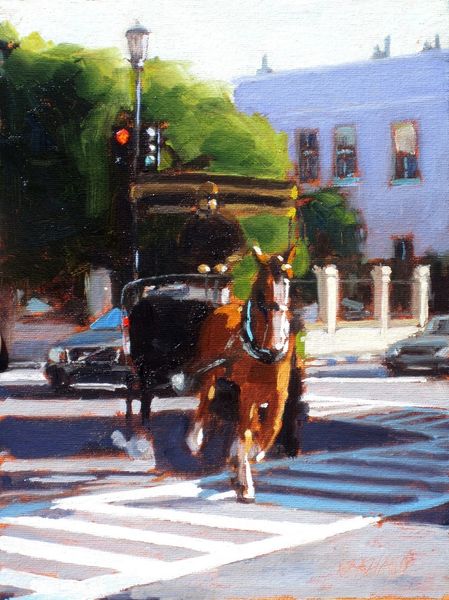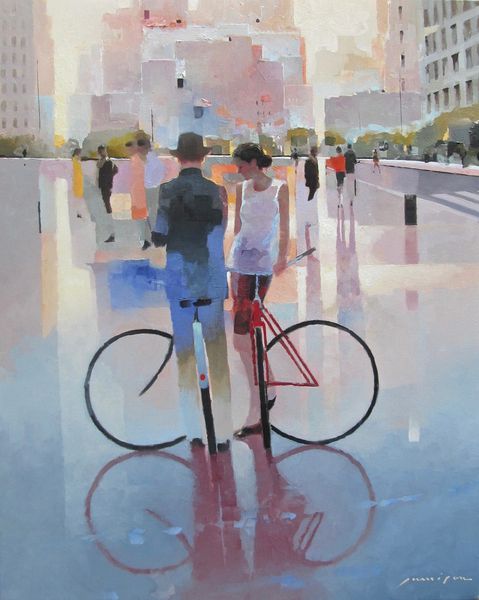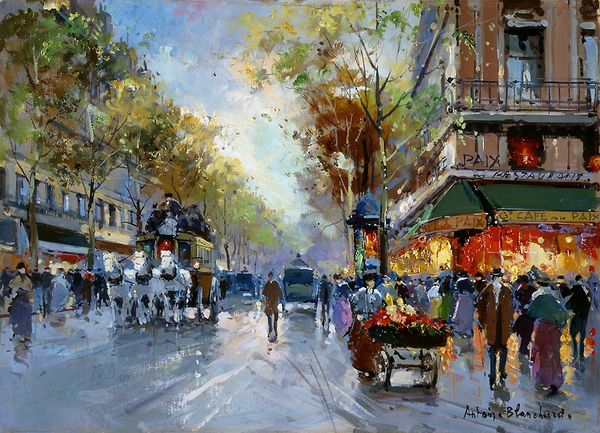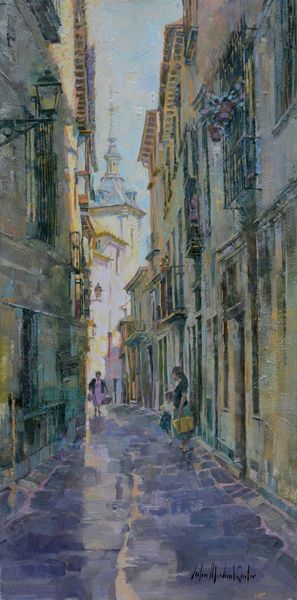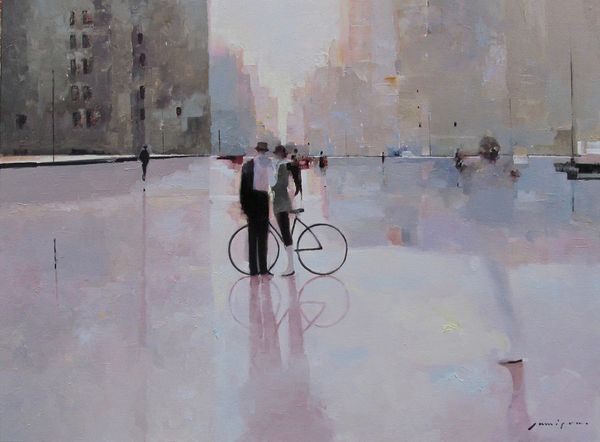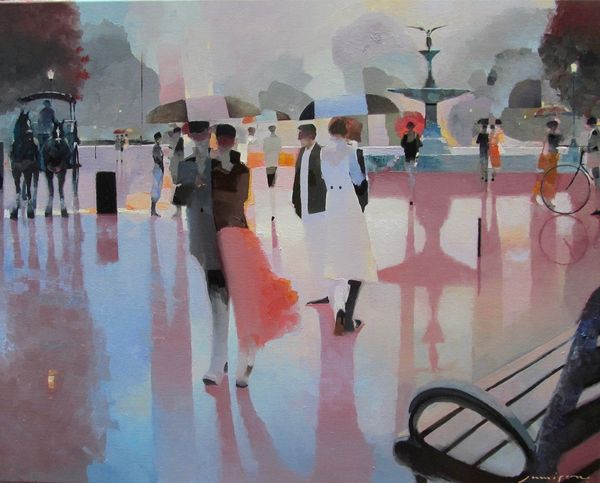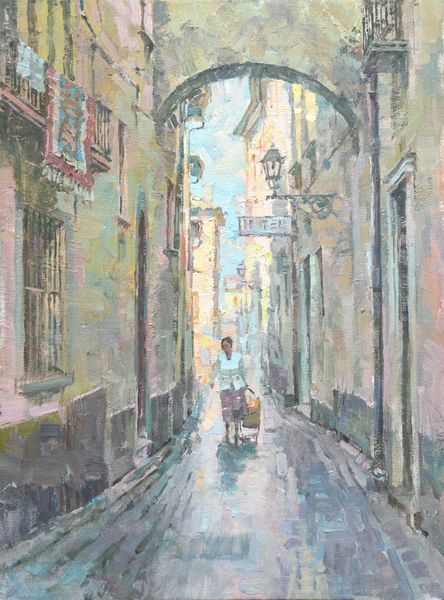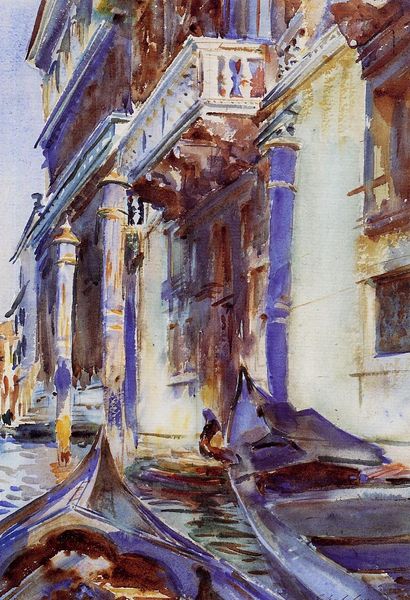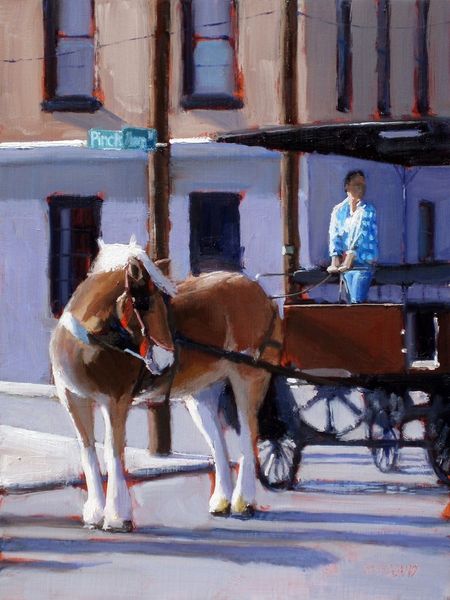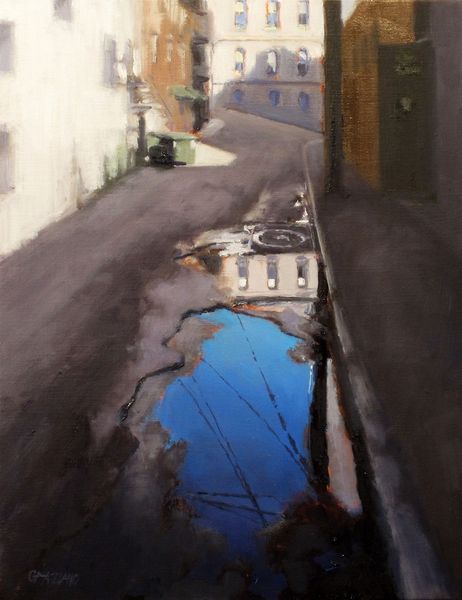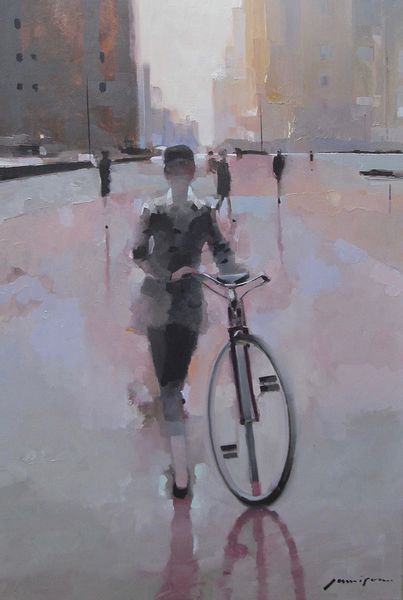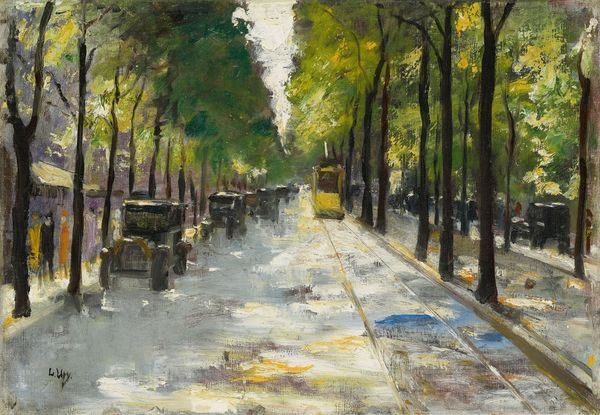
oil-paint
#
impressionism
#
oil-paint
#
landscape
#
oil painting
#
cityscape
#
genre-painting
Copyright: Modern Artists: Artvee
Curator: This painting by Dan Graziano is called "Afternoon In Charleston," an oil-on-canvas work depicting a vibrant Southern street scene. Editor: My first impression is the light; the composition practically glows. It's dominated by verticality – the trees, the church steeple, the figures. It all guides your eye upward. Curator: The composition does play with the vertical elements you mentioned, contrasting the natural and the architectural. The upward movement is disrupted by the horizontal lines of the carriage. Editor: Horse-drawn carriages are loaded with symbolism. The horse is an ancient emblem of power and status but here seems a nostalgic nod to a bygone era juxtaposed against contemporary traffic. Doesn't it conjure a sense of a romanticized past colliding with modern life? Curator: Precisely. The artist utilizes visible brushstrokes, building textures that define forms but also emphasize the painted surface itself. The layering and blending, combined with the muted, almost hazy palette, create an atmospheric quality that contributes to the impressionistic style. Note how the colors are almost dissolved by the light. Editor: It’s not just visual; it's deeply ingrained in Southern identity. The horse and carriage could be perceived as an iconic image symbolizing elegance and tradition; or the slow progress and perhaps economic disparities present within this city. Curator: Intriguing observations. However, looking at the way Graziano handles the brushstrokes – energetic, broken – there's also a formalism present. It is, after all, an object and the artist seems interested in showcasing its construction. It doesn’t seem to be tied to narrative in the conventional sense; instead, the artwork embraces pure experience of sight. Editor: I see your point; the application is energetic; this pushes beyond historical reenactment. Regardless, I’m moved by how visual shorthand prompts multiple layers of social-historical narratives about how culture endures over time. Curator: It appears that in essence, “Afternoon in Charleston" exists as this interesting dialogue between material handling and potent symbolization within the act of painting itself. Editor: Yes, and from a symbolist's point of view, to reflect upon this enduring dialogue adds to our understanding of cultural expression itself.
Comments
No comments
Be the first to comment and join the conversation on the ultimate creative platform.
